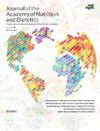膳食纤维摄入量与罹患晚期和侵袭性前列腺癌的风险:15 项前瞻性队列研究的汇总分析》。
IF 3.5
2区 医学
Q2 NUTRITION & DIETETICS
Journal of the Academy of Nutrition and Dietetics
Pub Date : 2025-01-01
DOI:10.1016/j.jand.2024.04.006
引用次数: 0
摘要
背景膳食纤维摄入量与晚期和侵袭性前列腺癌(PC)风险和PC死亡率之间的关联证据有限。目的:本研究的目的是研究膳食纤维的总体摄入量和食物来源与晚期和侵袭性PC风险之间的关系。研究设计是对来自三大洲15个队列的主要数据进行汇总分析。在每项研究中,基线膳食纤维摄入量通过有效的食物频率问卷或饮食史进行评估。1985年至2009年间,共有842 149名男性接受了长达9至22年的随访。主要结局指标主要结局指标为晚期(T4期、N1期或M1期或PC死亡率)、晚期限制性(排除分期缺失的男性和死于PC的局限性PC)、高级PC (Gleason评分≥8或低分化/未分化)和PC死亡率。使用Cox比例风险回归计算研究特定的多变量风险比(MVHR),并使用随机效应模型进行汇总。结果总的来说,从水果和蔬菜中摄取膳食纤维与晚期(n = 4863)、晚期限制性(n = 2978)、高级PC (n = 9673)或PC死亡(n = 3097)的风险无关。谷物膳食纤维摄入量与晚期PC呈负相关(比较最高五分位数与最低五分位数,MVHR 0.84;95% CI 0.76-0.93),晚期限制性PC (MVHR 0.85;95% CI 0.74-0.97)和PC死亡率(MVHR 0.78;95% ci 0.68-0.89);在统计学意义上,这些关联都有显著的趋势(P≤.03),在相同的比较中,观察到高等级PC的零关联(MVHR 1.00;95% ci 0.93-1.07)。可比结果为1.06 (95% CI 1.01-1.10;局部PC (n = 35199)和1.05 (95% CI 0.99-1.11;低/中级PC的P值,趋势检验= .04)(n = 34 366)。结论:总膳食纤维摄入量与晚期PC、高级别PC和PC死亡率之间存在不显著的相关性。从谷物中摄取高膳食纤维与晚期前列腺癌和前列腺癌死亡率较低的风险有关。本文章由计算机程序翻译,如有差异,请以英文原文为准。
Dietary Fiber Intake and Risk of Advanced and Aggressive Forms of Prostate Cancer: A Pooled Analysis of 15 Prospective Cohort Studies
Background
Evidence of an association between dietary fiber intake and risk of advanced and aggressive forms of prostate cancer (PC) and PC mortality is limited.
Objective
The aim of this study was to examine associations between intakes of dietary fiber overall and by food source and risk of advanced and aggressive forms of PC.
Design
The study design was a pooled analysis of the primary data from 15 cohorts in 3 continents. Baseline dietary fiber intake was assessed using a validated food frequency questionnaire or diet history in each study.
Participants/setting
There were 842 149 men followed for up to 9 to 22 years between 1985 and 2009 across studies.
Main outcome measures
The primary outcome measures were advanced (stage T4, N1, or M1 or PC mortality), advanced restricted (excluded men with missing stage and those with localized PC who died of PC), and high-grade PC (Gleason score ≥8 or poorly differentiated/undifferentiated) and PC mortality.
Statistical analysis performed
Study-specific multivariable hazard ratios (MVHR) were calculated using Cox proportional hazards regression and pooled using random effects models.
Results
Intake of dietary fiber overall, from fruits, and from vegetables was not associated with risk of advanced (n = 4863), advanced restricted (n = 2978), or high-grade PC (n = 9673) or PC mortality (n = 3097). Dietary fiber intake from grains was inversely associated with advanced PC (comparing the highest vs lowest quintile, MVHR 0.84; 95% CI 0.76-0.93), advanced restricted PC (MVHR 0.85; 95% CI 0.74-0.97), and PC mortality (MVHR 0.78; 95% CI 0.68-0.89); statistically significant trends were noted for each of these associations (P ≤ .03), and a null association was observed for high-grade PC for the same comparison (MVHR 1.00; 95% CI 0.93-1.07). The comparable results were 1.06 (95% CI 1.01-1.10; P value, test for trend = .002) for localized PC (n = 35,199) and 1.05 (95% CI 0.99-1.11; P value, test for trend = .04) for low/intermediate grade PC (n = 34 366).
Conclusions
Weak nonsignificant associations were observed between total dietary fiber intake and risk of advanced forms of PC, high-grade PC, and PC mortality. High dietary fiber intake from grains was associated with a modestly lower risk of advanced forms of PC and PC mortality.
求助全文
通过发布文献求助,成功后即可免费获取论文全文。
去求助
来源期刊

Journal of the Academy of Nutrition and Dietetics
NUTRITION & DIETETICS-
CiteScore
7.20
自引率
10.40%
发文量
649
审稿时长
68 days
期刊介绍:
The Journal of the Academy of Nutrition and Dietetics is the premier source for the practice and science of food, nutrition, and dietetics. The monthly, peer-reviewed journal presents original articles prepared by scholars and practitioners and is the most widely read professional publication in the field. The Journal focuses on advancing professional knowledge across the range of research and practice issues such as: nutritional science, medical nutrition therapy, public health nutrition, food science and biotechnology, foodservice systems, leadership and management, and dietetics education.
 求助内容:
求助内容: 应助结果提醒方式:
应助结果提醒方式:


